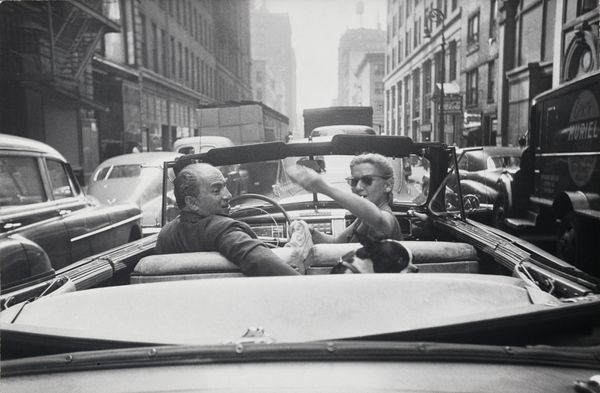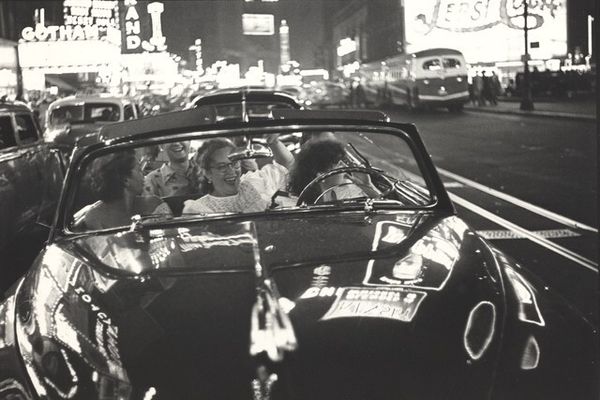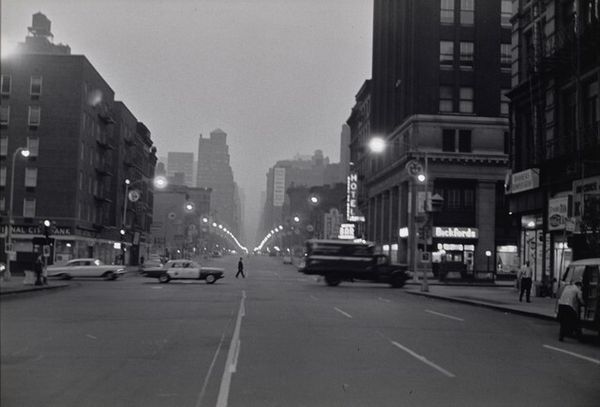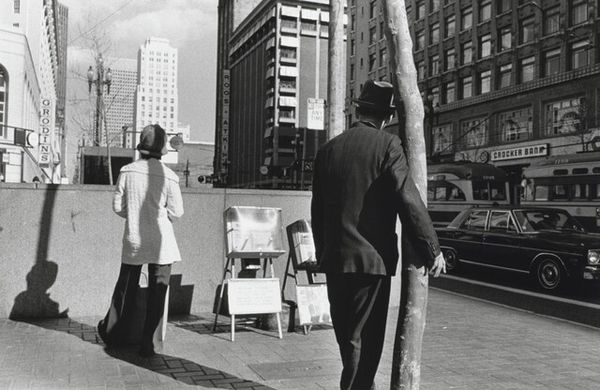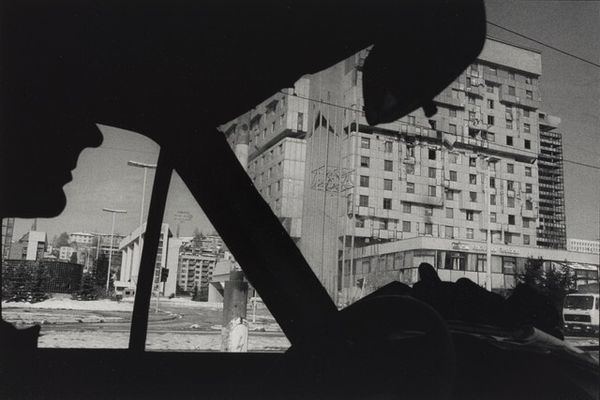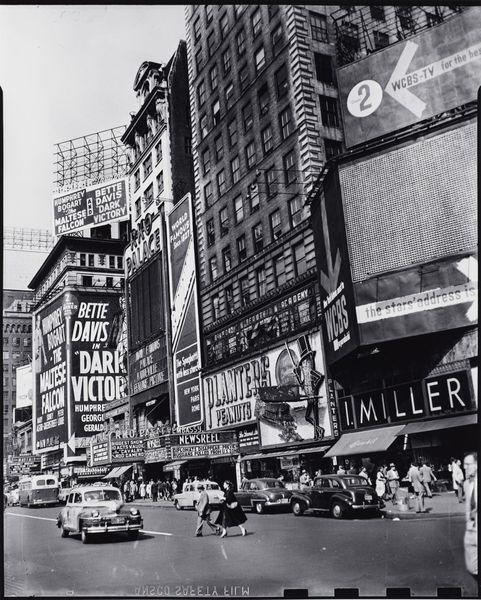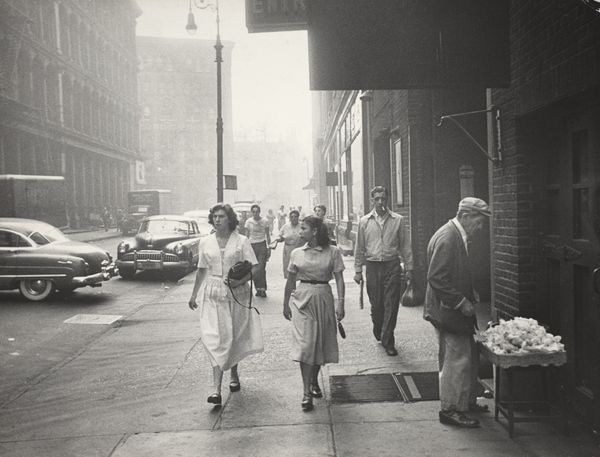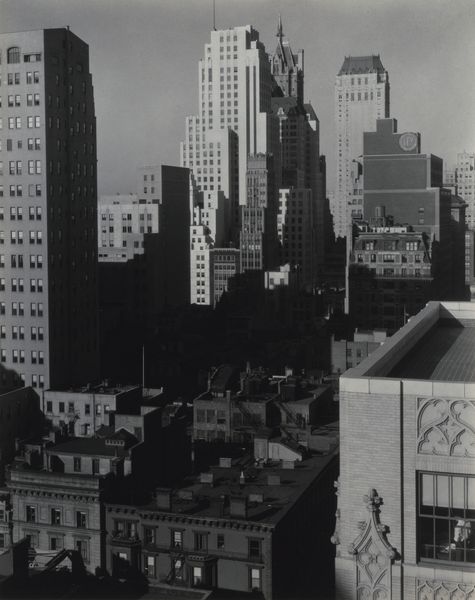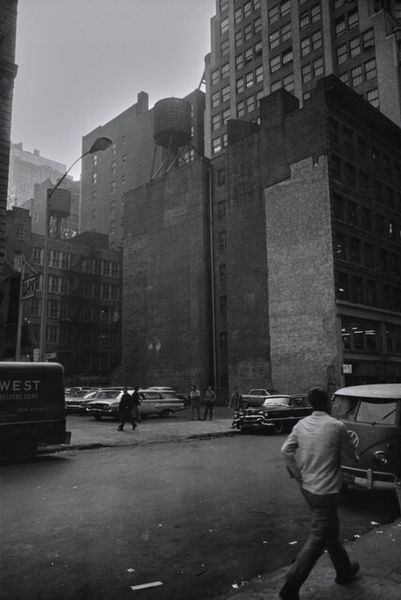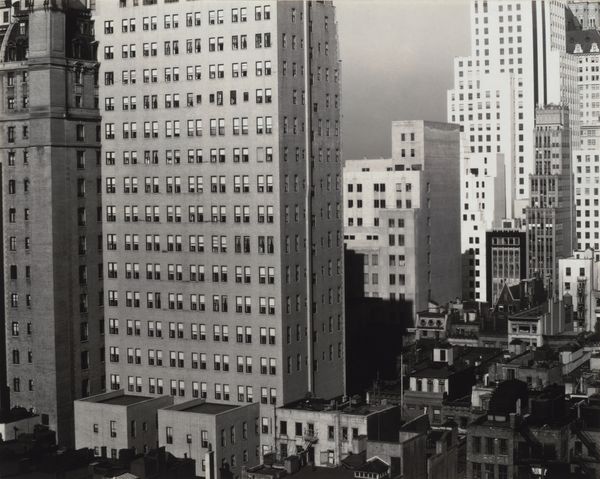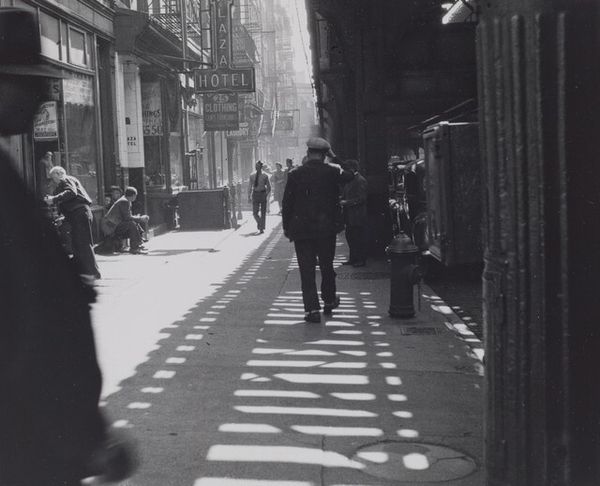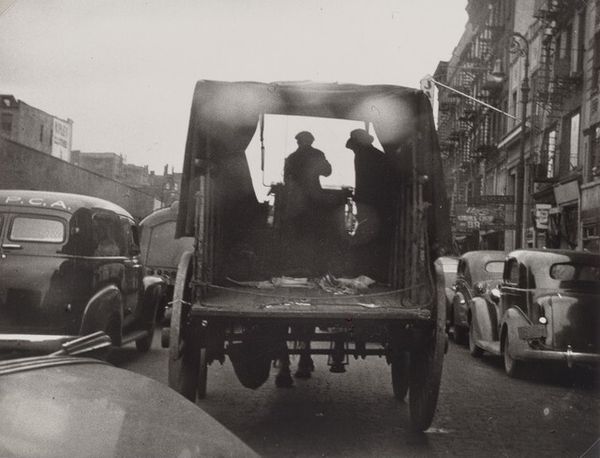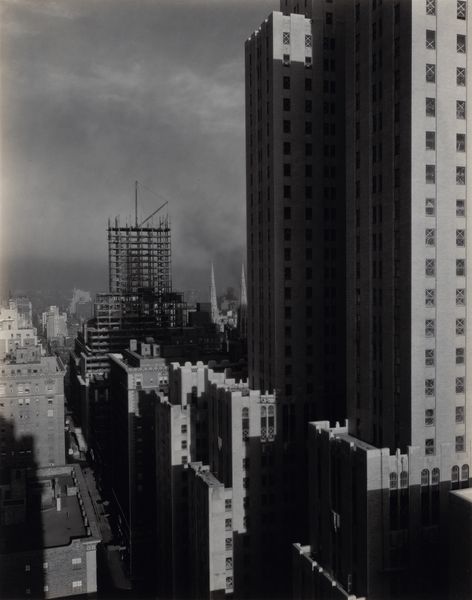
photography
#
portrait
#
black and white photography
#
street shot
#
street-photography
#
photography
#
monochrome photography
#
street photography
#
cityscape
#
modernism
Dimensions: image: 32.7 × 21.7 cm (12 7/8 × 8 9/16 in.) sheet: 35.5 × 28 cm (14 × 11 in.)
Copyright: National Gallery of Art: CC0 1.0
Curator: Welcome to this exhibit! We’re looking at Garry Winogrand’s "Park Avenue, New York," a photograph taken in 1959. Editor: Well, my first thought? Absurdity in black and white! A monkey in a convertible in the middle of Park Avenue – it’s the kind of image that makes you question reality. Curator: Precisely. Winogrand’s work often plays with the spontaneous and the unexpected, revealing social dynamics in mid-century America. Here, the presence of the monkey prompts questions about class, spectacle, and the human-animal divide. It evokes an intersectional reading concerning who has access to the city and on what terms. Editor: It’s wonderfully chaotic. The city looms in the background, buildings stacked upon buildings, and in the foreground, this… utterly random scene unfolds. The woman looks unfazed. The man is intensely serious and drives with a somber look in his face, meanwhile, Mr. Jocko is the most present. Maybe the photograph is asking what and who exactly is the spectacle in the urban arena, I wonder? Curator: Definitely. The woman’s detached expression can be viewed in several ways, perhaps revealing something about the privileged bubble, or as an indicator of an affect of gender roles prevalent at the time. It’s interesting that Winogrand captures a narrative here. A kind of urban theater about the absurd juxtaposition. Editor: Yes! It feels voyeuristic but inclusive. It almost makes me wonder how staged the moment could be. Regardless, it’s undeniably gripping. You want to know more about these people and their strange pet, to find an alternative backstory of a still reality. Curator: Winogrand's street photography captured many similar ambiguous social situations. It opens an interesting conversation around the construction of meaning through images, especially regarding the way photographic meaning is related to the lens of intersectionality. This black and white rendering really brings the contrast forward and accentuates the tonality of 50s photography. Editor: Looking at this again makes me think about how much our interaction with urban spaces has changed and remained the same. It kind of reflects on how different New York must've been then! This piece feels very potent. Curator: I agree, this piece stays with you and it helps us look at contemporary realities with new eyes. Thank you for your insights! Editor: Thanks for having me! It was a delight.
Comments
No comments
Be the first to comment and join the conversation on the ultimate creative platform.
